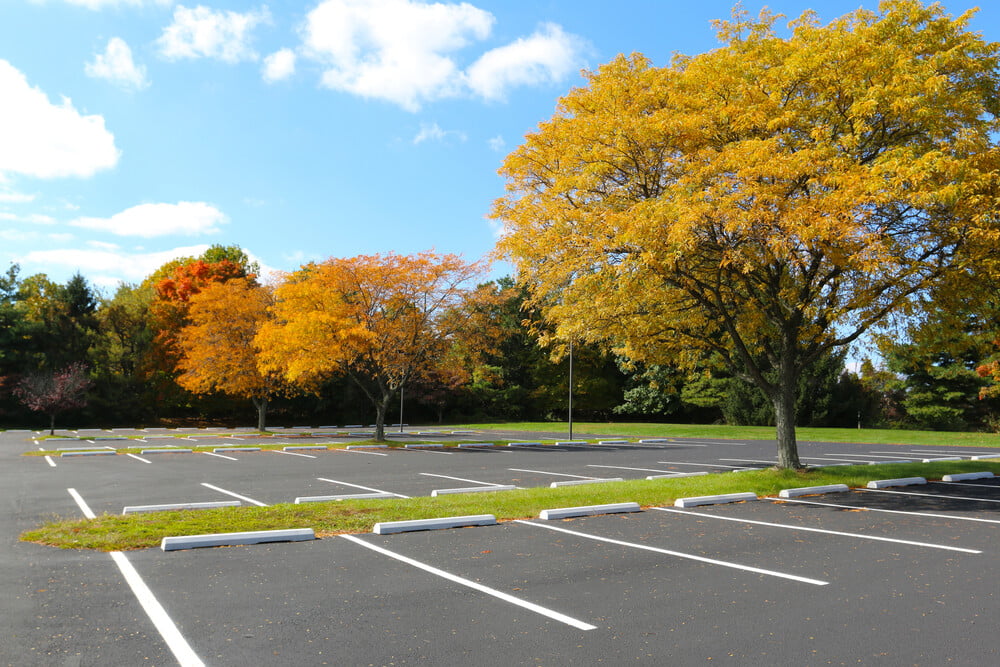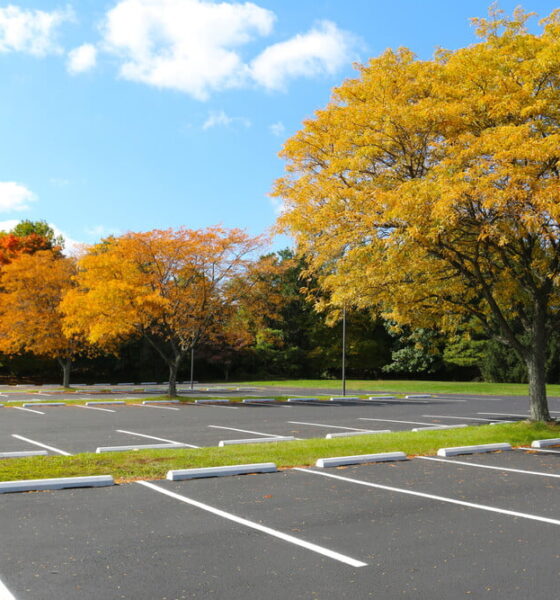

Environment
5 Ways To Make Your Parking Lot Eco-Friendly
Today, nearly everyone across the globe is concerned about the environment. Humans have, for many years, engaged in activities that destroy the environment. But lately, they have realized their mistakes, and are making efforts to be more eco-friendly. That’s why you hear of eco-friendly packaging, vehicles, houses, clothing, and the like. Parking lots are also part of this list.
For many years, people have been constructing parking lots using asphalt and non-permeable concrete. Such parking lots can cause environmental problems, like flooding, water pollution, and the urban heat island effect.
Fortunately, you can build parking spaces that don’t cause such problems. Here are some things you can do to make your parking lot eco-friendly:
1. Use Eco-friendly Paint
Painting your parking lot is one way to avert disasters and accidents. If your parking has no demarcations, different drivers park whichever way they feel like, without thinking about order. And you can’t blame anyone for this behavior. Without guides, they can’t do any better.
However, paint is among the most common air pollutants. Some paints contain Volatile Organic Compounds (VOC) like glycol, ammonia, toluene hydrocarbons, and xylene into the air. These compounds are hazardous to human, animal, and plant health.
A safer option is to use biodegradable paint for your parking lot striping. This type of paint is made from natural and renewable sources, such as linseed oil and citrus oils. Also, it contains a mere 0-1% VOC. Thus, it’s very eco-friendly, hence poses no adverse negative effect on the environment if washed away by the rains. Biodegradable paints are available in all popular colors, too. So, choose the one you like most.
2. Plant Grass
Grassed parking lots not only look beautiful but are also a sustainable option. However, plain grass attracts mud and rut. To counter this, you can use a plastic pavers system to stabilize your grass. First, lay a plastic grid on the ground and fill it with soil mixed with concrete. This mixture supports the growth of grass.
Alternatively, to improve drainage, add sand to the soil. Grass is permeable to rainwater and helps control soil erosion near parking lots. Additionally, grass doesn’t absorb and emit heat like paving blocks. Thus, this option solves the urban heat island effect.
Note that grassed parking lots work best in areas with light traffic. If too many vehicles park on the grass, it may soon die, leaving the area bare and ugly.
3. Use Pervious Concrete
Impervious parking lots are prone to flooding. To avoid this environmental hazard, consider using permeable concrete. This kind of concrete helps control stormwater. It also enables you to plant trees or flowers along your pavements. Water and air will also adequately penetrate the roots of the plants, so you don’t have to worry whether the plants will survive or not.
Moreover, you can use concrete with permeable asphalt to achieve a more sustainable parking lot that reduces the heat island effect. They also make the environment safer for motorists by increasing traction through coarse aggregates. Unlike the grassed ones, this type of parking is suitable for high traffic areas. They also have a lifespan of 20-30 years.
Now, if you are really looking to go the extra mile and find the most eco-friendly option possible, you can always elect to use recycled concrete. All you would need to do is check with your aggregate supplier to determine whether they offer recycled concrete, and if they do, you can request that they deliver recycled material to the site rather than their traditional concrete.
Once you’re done with construction, you forget about repairs for the next three decades or more. In case you have trees growing in the area earmarked for parking, there’s no need to cut them. You can simply leave them to act as markers between parking spaces.
However, because of its nature, you’ll need to do regular maintenance to ensure soil and weeds don’t take over the parking area.
4. Direct Storm Water Runoff
Don’t construct a parking lot without a concrete plan of where rainwater will go. If you do so, water will naturally find its course. You may not like the outcome as it may erode soil and destroy items along its trail. So, construct drainage channels around and within your parking lot to direct all runoff to an appropriate area, like a stream, swamp, or lake near your home.
If water is a problem in your area of residence, you can collect stormwater runoff from your parking lot. Then, use it constructively for activities such as farming. And, if you have the capability, filter the collected water and use it for domestic chores.
5. Install Permeable Pavers
Permeable interlocking concrete pavers are also eco-friendly. Unlike cast concrete and asphalt tarmacking, these allow water to infiltrate into the soil. Because of this, they don’t cause as much flooding as the impermeable ones. With this, stormwater seeps slowly into the ground and recharges local groundwater supplies and streams.
Final Words
With a little research and planning, you can construct eco-friendly parking lots. As a start, try any of the five options above. Remember, environmental conservation starts with you. Don’t wait for your government to do everything. You have your part to play.






























